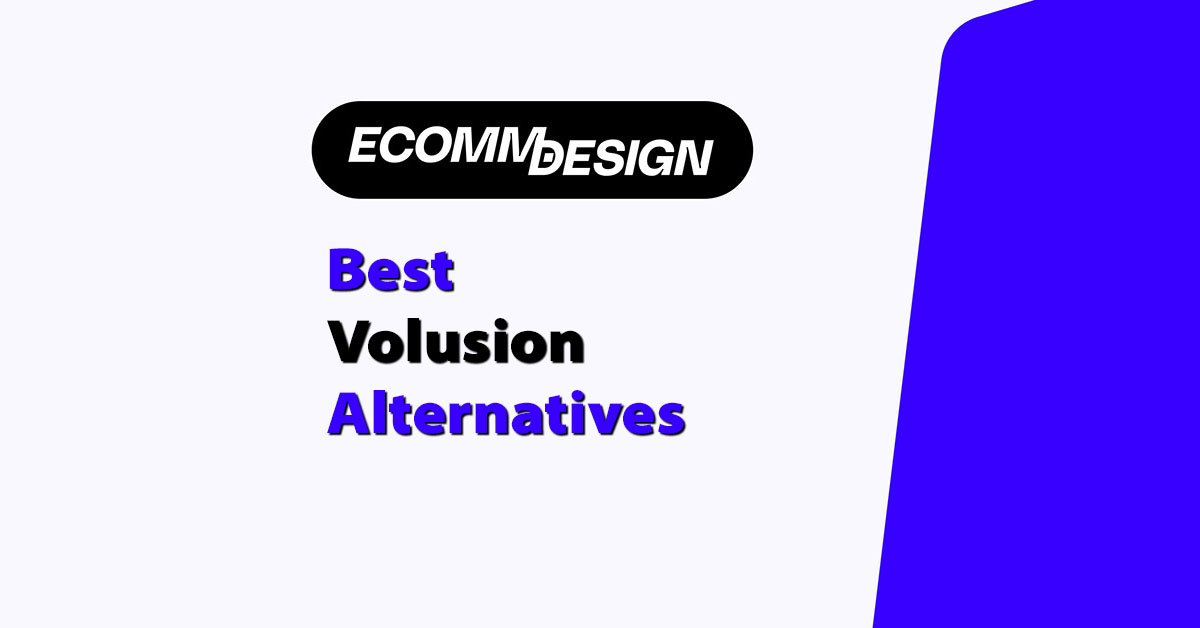
Quick answer:
If you’re looking to move on from Volusion, the best alternatives are Shopify for all-round ease, BigCommerce for scaling, WooCommerce if you want control, and Wix or Squarespace if design is your priority.
Volusion just doesn’t cut it anymore — whether you’re dealing with outdated UX, weak SEO tools, or lack of flexibility, there are better options now.
I’ve run stores on almost every major platform, and I’ve helped migrate dozens of clients off Volusion.
This list comes from experience, not theory.
Let’s get into what actually works — and which platforms to avoid.
Volusion Alternatives Comparison Table
| Platform | Best For | Budget |
|---|---|---|
| Shopify | All-round performance | $$ |
| BigCommerce | Fast-scaling brands | $$ |
| WooCommerce | SEO and custom control | $–$$ |
| Wix | Beautiful design + simplicity | $ |
| Squarespace | Visual branding + storytelling | $ |
| Shift4Shop | Free alternative | Free |
| Magento | Large, complex eCommerce | $$$ |
| PrestaShop | International stores | $–$$ |
| Ecwid | Add-on eCommerce | Free–$ |
Why People Are Leaving Volusion
Volusion was a solid choice back in the day, but the platform hasn’t kept up. If you’ve been frustrated by:
- A clunky admin interface that feels 10 years old
- Limited design options
- Poor mobile performance
- Weak SEO features
- Complex pricing
You’re not alone.
I’ve worked with store owners who’ve seen traffic drop, sales stall, and bounce rates skyrocket — just because the tech behind Volusion can’t keep up with modern shoppers.
Add to that the uncertainty after their bankruptcy filing, and it’s not worth the risk anymore.
Now, here are the real alternatives that actually work:
1. Shopify – Best Overall Alternative
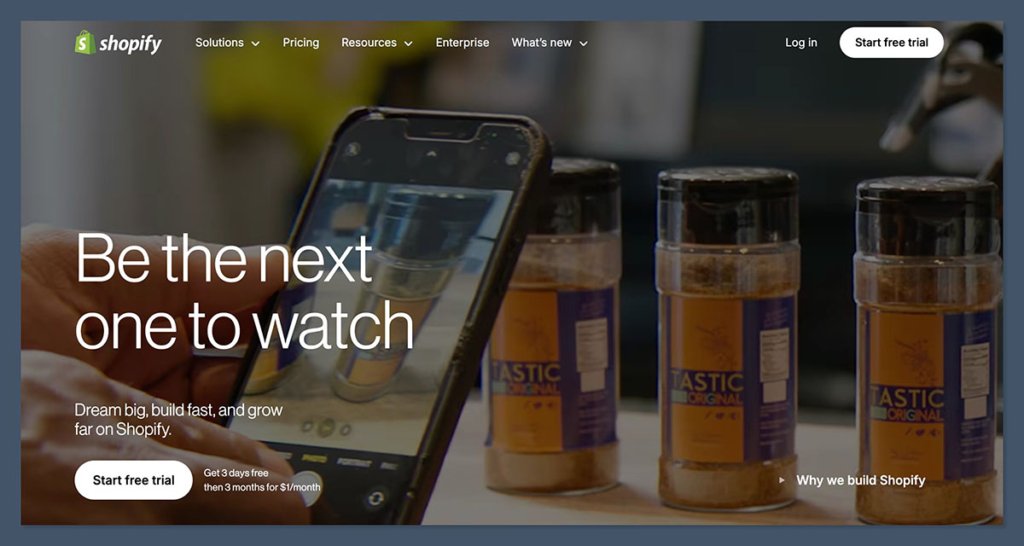
Why I Recommend It
Shopify is my go-to recommendation for 90% of eCommerce brands. It’s beginner-friendly, scales fast, and has a huge ecosystem of apps, themes, and service providers.
I’ve personally migrated over 15 brands from Volusion to Shopify. Every single one saw better UX, higher conversion rates, and stronger SEO visibility within 60–90 days. That’s not theory — that’s actual data from live stores.
The biggest difference? Shopify just works. You’re not fighting your platform. It gives you the tools to build, launch and grow without needing a full-time developer on speed dial.
If you’re running paid ads or doing SEO, speed and usability matter — and Shopify nails both.
Pros
- Intuitive backend that anyone can learn in hours
- Clean, modern templates that convert well
- Massive app store with plug-and-play add-ons
- SEO tools that cover meta titles, schema, canonical tags
- Fast loading speeds with optimised CDN and hosting
- 24/7 support via live chat, phone, and email
Cons
- Transaction fees unless you use Shopify Payments
- Monthly app costs can pile up quickly
- Customisation is limited unless you know Liquid
- URL structure (e.g. /collections/ /products/) isn’t editable
Pricing (Monthly)
| Plan | Monthly Cost (USD) | Key Features Included |
|---|---|---|
| Basic | 39 | 2 staff accounts, basic reports, discount codes |
| Shopify | 105 | 5 staff accounts, professional reports |
| Advanced | 399 | 15 staff accounts, custom reports + shipping |
There’s also Shopify Plus, which starts around $2,300/month for enterprise brands — but most stores won’t need that unless you’re doing $1M+/year.
Best For
- Brands scaling from 5 to 8 figures
- Designers and agencies looking for fast, flexible builds
- Store owners who want to focus on marketing, not tech
- Dropshippers, subscription brands, and POD stores
- SEO-first brands that want clean site structure without devs
If you’re stuck on Volusion and tired of dealing with a clunky backend, Shopify’s a breath of fresh air. You get full control over the front end, minimal headaches on the back end, and a clear path to scale.
Try Shopify2. Wix eCommerce – Best for Design Control
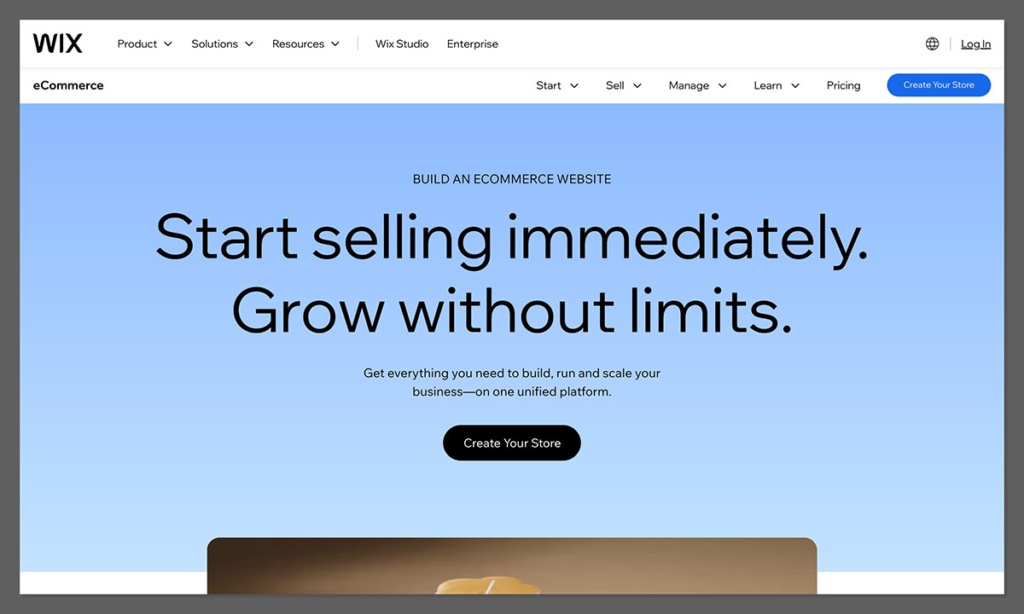
Why I Recommend It
Wix has come a long way, especially in the eCommerce space.
It’s no longer just a simple website builder — it now offers a surprisingly capable online store platform that gives you full visual control without needing to touch a single line of code.
I’ve used Wix for boutique fashion brands, local retailers, and lifestyle shops where visual presentation is everything.
The drag-and-drop builder is still the best on the market for non-developers. You can literally build exactly what you see in your head.
It’s ideal for brand-first businesses where design, layout, and storytelling carry the sale more than product complexity.
Pros
- Drag-and-drop builder gives unmatched creative freedom
- Templates are modern, polished, and easy to customise
- Built-in tools for email campaigns, basic SEO, and live chat
- Ideal for quick builds without developers
- Easy to connect domains, manage media, and update content
Cons
- Not built for large-scale stores or fast growth
- Less control over technical SEO and backend structure
- Limited scalability compared to Shopify or BigCommerce
- Smaller app marketplace means fewer advanced features
Pricing (Monthly)
| Plan | Monthly Cost (USD) | Key Features Included |
|---|---|---|
| Business Basic | 27 | Secure payments, customer accounts, basic eComm |
| Business Unlimited | 32 | Subscriptions, multiple currencies, more storage |
| Business VIP | 59 | Priority support, advanced analytics |
There are no transaction fees through Wix Payments, which is a plus — but you’ll still pay payment gateway fees (like Stripe or PayPal).
Best For
- New or small online stores focused on branding
- Design-first brands that want creative control without developers
- Portfolio-style or boutique stores with limited SKUs
- Service-based businesses selling digital products or subscriptions
- Local shops or events that want a sleek online storefront
If you’re switching from Volusion and your main pain point is outdated design or clunky UX, Wix can feel like a total upgrade. It’s simple, fast, and lets you build a site that reflects your brand without fighting templates or code.
3. BigCommerce – Best for Scaling Fast
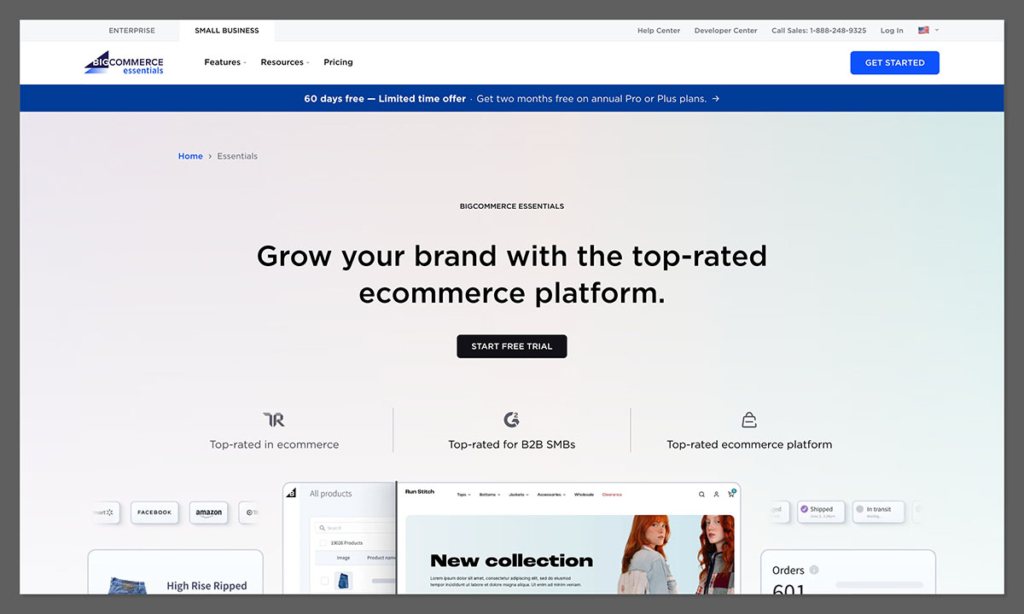
Why I Recommend It
BigCommerce is ideal for brands that are growing fast and need powerful features built right in — not stacked through a bunch of third-party apps.
It’s more robust than Shopify out of the box, and that alone saves money and complexity as you scale.
I’ve worked with enterprise clients who hit brick walls with Volusion. They needed better tax management, advanced shipping rules, or flexible pricing structures.
Moving to BigCommerce solved those issues instantly. For brands dealing with large product catalogs or B2B complexity, it just handles more — without breaking under pressure.
Pros
- No transaction fees, even with third-party payment gateways
- Built-in support for B2B features like customer groups, custom pricing, and purchase orders
- Advanced international selling features including multi-currency and VAT support
- Better SEO tools than most — edit URLs, metadata, and robots.txt easily
- Product filtering, bulk editing, and SKUs are easier to manage at scale
Cons
- Theme selection is limited compared to Shopify
- Backend UI isn’t as intuitive for beginners
- Customisation options exist, but the learning curve is steeper
- Some features (like abandoned cart recovery) are gated behind higher plans
Pricing (Monthly)
| Plan | Monthly Cost (USD) | Revenue Threshold | Key Features |
|---|---|---|---|
| Standard | 39 | Up to $50,000/year | Unlimited products, SEO tools, single-page checkout |
| Plus | 105 | Up to $180,000/year | Customer groups, abandoned cart recovery |
| Pro | 399+ | Up to $400,000/year (then fee-based scaling) | Google reviews, advanced search, filtering |
There’s also Enterprise pricing, which is custom and designed for brands doing $1M+ with unique integration needs or headless builds.
Best For
- Fast-growing DTC or B2B brands
- Merchants needing advanced catalog or tax settings
- Stores scaling past $500k/year
- International sellers who need localisation out of the box
- SEO-first businesses that want deeper control than Shopify offers
If you’re moving off Volusion and scaling fast, BigCommerce gives you the infrastructure to do it without duct-taping your tech stack together. You get power and flexibility without diving into open-source complexity.
4. WooCommerce – Best for WordPress Users
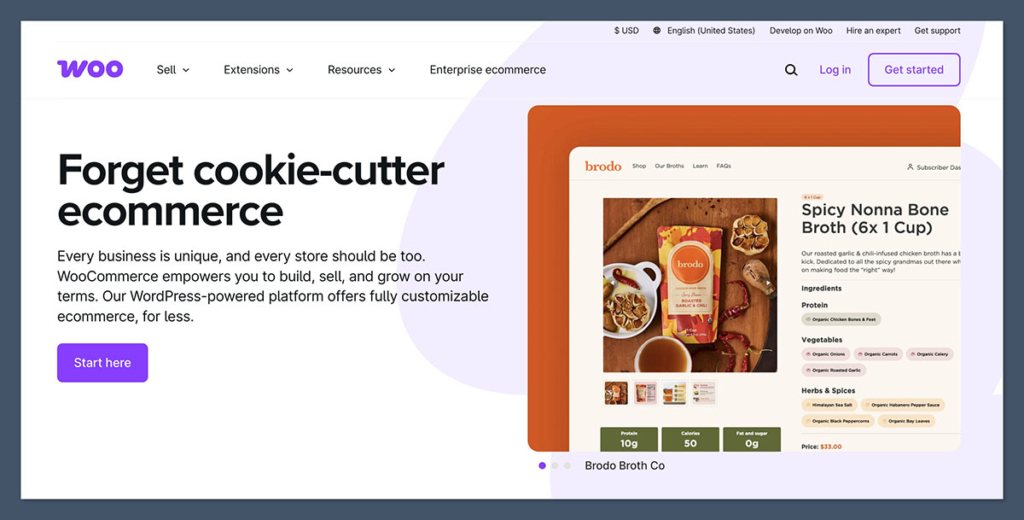
Why I Recommend It
If you’re already using WordPress or want full control over your site, WooCommerce is hard to beat.
It’s open-source, which means you’re not tied to platform limitations, monthly fees, or closed ecosystems. You own everything — from the code to the data.
I’ve worked with several SEO-first brands that migrated from Volusion to WooCommerce, and they saw results quickly. Better rankings, faster load times, and cleaner site architecture.
That kind of flexibility is exactly why WooCommerce is still the top choice for developers and marketers who want complete control.
Pros
- Full ownership of your site, code, and data
- Massive ecosystem of themes, plugins, and integrations
- Unlimited flexibility for product types, layouts, and checkout flows
- SEO control that goes way beyond any SaaS platform
- Perfect for combining commerce with content and lead gen
Cons
- You’re responsible for hosting, updates, and security
- Can get technical quickly, especially at scale
- Plugin conflicts and performance issues can crop up if not managed well
- No dedicated support — you’re reliant on community, forums, or paid help
Pricing (Monthly Averages)
| Cost Area | Typical Range (USD) | Notes |
|---|---|---|
| Core Plugin | Free | WooCommerce itself is free to use |
| Hosting | 10 to 50 | Depends on traffic and performance needs |
| Paid Plugins | 20 to 100+ | For SEO, payments, shipping, and subscriptions |
| Developer Help | Optional but recommended | One-off or retainer costs if you need support |
Realistically, most WooCommerce stores spend between 30 to 150 dollars per month, depending on complexity.
Best For
- SEO-driven brands or bloggers adding eCommerce
- Teams with development or agency support
- High-content sites that need more than just a product grid
- Businesses that want to own and customise every piece of their online store
- Brands that need internationalisation or niche integrations not supported by SaaS platforms
If you’re migrating from Volusion and already using WordPress, WooCommerce is the most natural fit. You keep control, avoid platform lock-in, and build a tech stack tailored to your brand — not the other way around.
2. Wix eCommerce – Best for Design Control

Why I Recommend It
Wix has come a long way, especially in the eCommerce space.
It’s no longer just a simple website builder — it now offers a surprisingly capable online store platform that gives you full visual control without needing to touch a single line of code.
I’ve used Wix for boutique fashion brands, local retailers, and lifestyle shops where visual presentation is everything.
These stores didn’t need huge feature sets or complex backend logic — they just needed to look premium, load fast, and feel easy to use. And Wix delivered.
The drag-and-drop builder is still the best on the market for non-developers. You can literally build exactly what you see in your head.
Pros
- Drag-and-drop builder gives unmatched creative freedom
- Templates are modern, polished, and easy to customise
- Built-in tools for email campaigns, basic SEO, and live chat
- Ideal for quick builds without developers
- Easy to connect domains, manage media, and update content
Cons
- Not built for large-scale stores or fast growth
- Less control over technical SEO and backend structure
- Limited scalability compared to Shopify or BigCommerce
- Smaller app marketplace means fewer advanced features
Pricing (Monthly)
| Plan | Monthly Cost (USD) | Key Features Included |
|---|---|---|
| Business Basic | 27 | Secure payments, customer accounts, basic eComm |
| Business Unlimited | 32 | Subscriptions, multiple currencies, more storage |
| Business VIP | 59 | Priority support, advanced analytics |
There are no transaction fees through Wix Payments, which is a plus — but you’ll still pay payment gateway fees (like Stripe or PayPal).
Best For
- New or small online stores focused on branding
- Design-first brands that want creative control without developers
- Portfolio-style or boutique stores with limited SKUs
- Service-based businesses selling digital products or subscriptions
- Local shops or events that want a sleek online storefront
If you’re switching from Volusion and your main pain point is outdated design or clunky UX, Wix can feel like a total upgrade. It’s simple, fast, and lets you build a site that reflects your brand without fighting templates or code.
5. Squarespace Commerce – Best for Branding
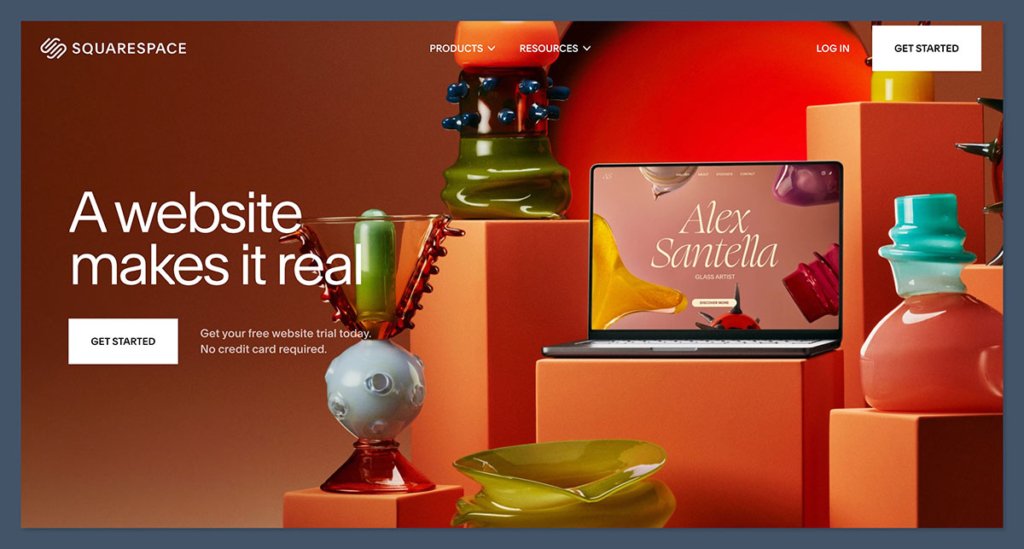
Why I Recommend It
If you want your site to feel like it was designed by an art director, Squarespace nails that.
It’s one of the cleanest, most visually consistent platforms out there. You can build a store that feels premium right out of the gate — no plugins, no code, no outside designers needed.
I often recommend Squarespace to clients in fashion, beauty, and interiors — brands that live and die by their visual identity. It’s not built for huge inventories or complex catalog structures, but if your business relies on storytelling and sleek design, it’s a strong choice.
Squarespace’s drag-and-drop builder is intuitive, but the real power lies in its design system. Typography, image scaling, layout blocks — it all works together smoothly.
It’s not just about looking good — it makes the shopping experience feel polished and intentional.
Pros
- Gorgeous, responsive templates that require zero coding
- Seamless integration with content features like blogging, portfolios, and video
- No need for external hosting, plugins, or security tools
- Solid built-in tools for email marketing, analytics, and social promotion
- Easy inventory setup for smaller catalogs
Cons
- Limited support for product variants and complex SKUs
- Third-party app integrations are fewer than Shopify or WooCommerce
- Checkout and cart customisation are very restricted
- No multi-store or multi-currency support out of the box
Pricing (Monthly)
| Plan | Monthly Cost (USD) | Key Features Included |
|---|---|---|
| Business | 23 | Basic eCommerce, 3% transaction fee, content features |
| Commerce Basic | 27 | No transaction fees, customer accounts, mobile checkout |
| Commerce Advanced | 49 | Abandoned cart recovery, subscriptions, advanced shipping |
For most brands, Commerce Basic is the sweet spot unless you need subscriptions or custom shipping rules.
Best For
- Lifestyle and design-led brands focused on presentation
- Small stores with 1–50 products and a strong brand identity
- Solo entrepreneurs selling digital goods, merch, or creative services
- Businesses that care more about how the store looks and feels than backend complexity
If Volusion’s clunky interface has been holding your brand back from looking the part, Squarespace is a major step up. The balance of design and simplicity means you can launch quickly and look polished from day one.
Just remember — this isn’t the right tool for large catalogs, wholesale stores, or anything with advanced backend logic. But for clean, design-driven shopping experiences, especially for personal or creative brands, Squarespace delivers exactly what you need.
6. Shift4Shop (formerly 3dcart) – Best Free Alternative
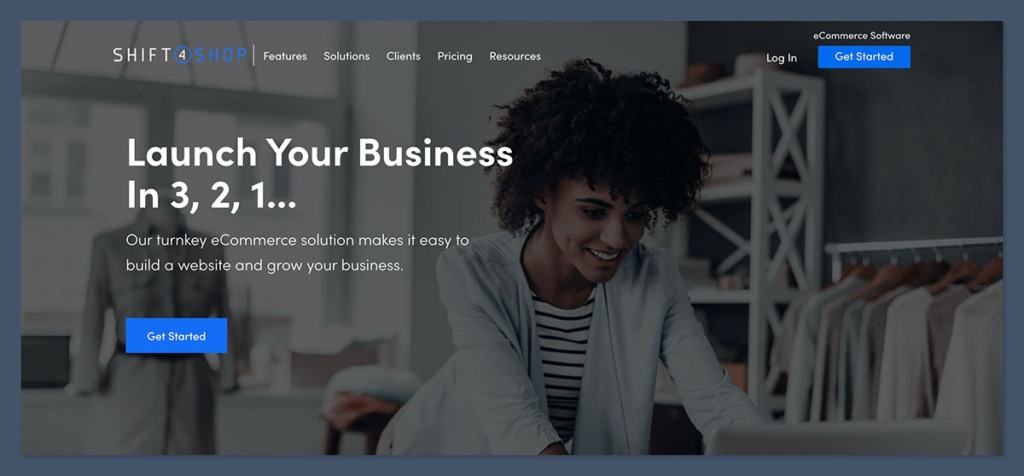
Why I Recommend It
Shift4Shop offers a surprisingly complete eCommerce solution at zero cost — as long as you use their in-house payment processor, Shift4Payments.
You get a full-featured platform without a monthly bill, which makes it a rare find in a space where most platforms start at $30 and quickly climb from there.
I’ve used Shift4Shop on budget-conscious builds for clients who needed to get online fast without cutting essential features.
It’s definitely not the sleekest tool on the list, but it handles the basics really well — especially if you’re tech-savvy or coming from something like Volusion and want to stay in a familiar structure.
Functionality-wise, it covers most of what you’d expect: SEO tools, product management, discounts, customer groups, and email notifications.
The admin dashboard looks and feels a bit dated, but once you get the hang of it, it’s a capable system.
Pros
- Completely free if you use Shift4Payments (US-based merchants only)
- Built-in tools like abandoned cart recovery, product reviews, gift cards, and shipping calculators
- Strong documentation and active support channels
- One of the few platforms offering real functionality at the free tier
- Ideal for DIY users who don’t want to deal with multiple third-party apps
Cons
- UI is dated compared to newer platforms
- Theme customisation feels limited and outdated
- Smaller ecosystem with fewer integrations
- Initial setup has a steeper learning curve for non-technical users
Pricing (Monthly)
| Plan Type | Monthly Cost (USD) | Requirements |
|---|---|---|
| Free Plan | 0 | US merchants only using Shift4Payments |
| Core Plan | 29 | For non-US merchants or those using other gateways |
| Advanced/Enterprise | 229+ | Custom pricing for high-volume businesses |
If you’re outside the US or want to use a third-party gateway like PayPal or Stripe exclusively, you’ll need to move to one of the paid plans.
Best For
- Startups with zero budget that want a full eCommerce feature set
- Technical founders or devs who are comfortable with an older UI
- Brands testing product-market fit before investing in paid platforms
- Merchants who want core functionality without third-party plugins or monthly app fees
Shift4Shop isn’t flashy, but it does the job — and the free pricing makes it incredibly appealing for early-stage brands. If you’re coming off Volusion and don’t want to jump into a fully hosted SaaS platform just yet, this is a smart stepping stone.
It’s best for people who value features over design, and who don’t mind investing a bit of time upfront learning how the system works.
Just be aware: it’s not ideal for scaling into a large, design-led brand. But for scrappy startups, this is about as generous as it gets.
7. Magento / Adobe Commerce – Best for Enterprise
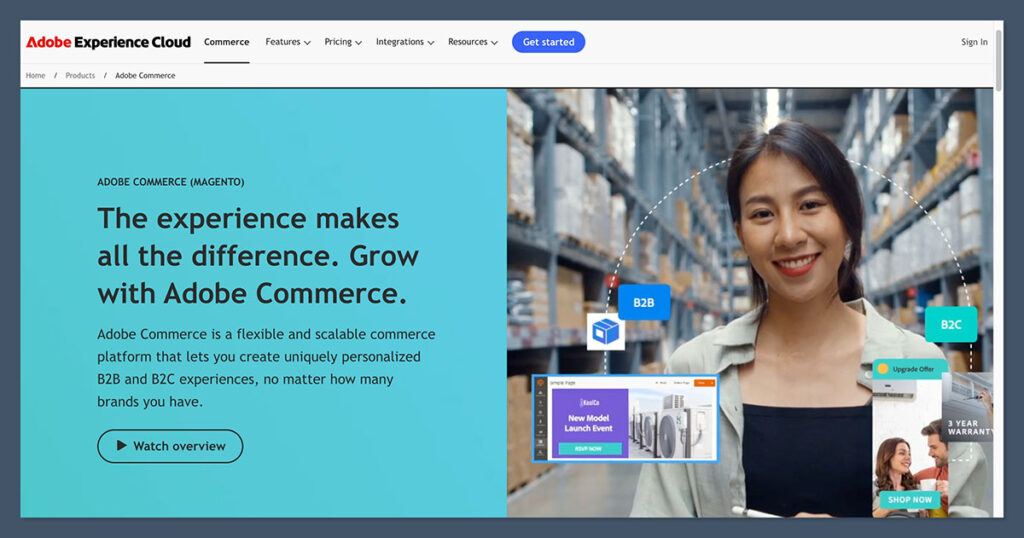
Why I Recommend It
Magento is built for scale — and when I say scale, I mean full-blown enterprise operations with thousands of SKUs, complex pricing rules, multiple warehouses, and layered customer segmentation.
If your business needs deep backend logic or you’re running custom B2B workflows, Magento delivers the kind of flexibility other platforms can’t touch.
I’ve worked with brands doing $10M+ annually who rely on Magento for things like multi-store setups, international shipping rules, and custom ERPs.
For them, the move away from Volusion wasn’t just about design or features — it was about infrastructure. Magento can be moulded to fit nearly any need, but it’s not for the faint of heart. You’ll need developers or a dedicated agency, but in return, you get full control.
If you’re looking to build something truly custom — maybe you have complex product types, tiered pricing models, or multiple storefronts feeding one inventory — Magento is one of the few platforms that can handle it all without compromise.
Pros
- Extreme flexibility for custom features, APIs, and integrations
- Supports complex user permissions, B2B functionality, and customer segmentation
- Built to scale — easily supports millions in revenue and thousands of SKUs
- Open-source version gives total control over architecture
- Excellent multi-store and multi-language support
Cons
- Development and maintenance costs are high
- You’re responsible for hosting, performance tuning, and security
- Updates and patches can be time-consuming and risky without proper QA
- Long implementation timelines — this isn’t a weekend project
Pricing
| Version | Cost Estimate | What’s Included |
|---|---|---|
| Open-Source | Free | You host and manage everything yourself |
| Adobe Commerce (Cloud) | Starts around $22,000/year | Hosting, cloud services, support, scalability tools |
Most enterprise builds also factor in development retainers, hosting (for open-source), and potential third-party tools, which can push the total annual investment to $50,000+, depending on scope.
Best For
- Enterprise eCommerce brands with high revenue and complex infrastructure
- Custom B2B stores with unique workflows or pricing structures
- Teams that require deep integrations with CRMs, ERPs, or inventory systems
- Brands operating multiple storefronts across different countries or verticals
- Merchants who need total architectural control and long-term scalability
Magento is not the right move for every business — in fact, for 90% of brands, it’s probably overkill.
But if you’ve outgrown Shopify, hit tech limits on BigCommerce, or have infrastructure that doesn’t play nice with standard SaaS platforms, Magento gives you the firepower to build exactly what you need.
Just be prepared: it’s a commitment. You’ll need a dev team or an agency that knows the platform inside out, ongoing QA processes, and a long-term investment mindset.
But for enterprise brands, the payoff is control — and the ability to scale without tech getting in the way.
8. PrestaShop – Best Open-Source Alternative
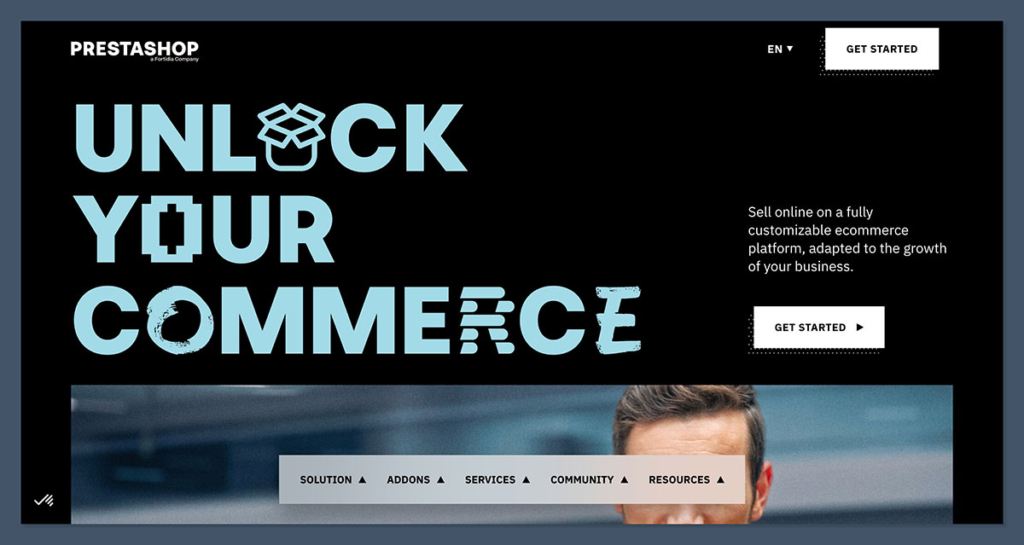
Why I Recommend It
PrestaShop is one of the more underrated eCommerce platforms — especially if you want something open-source but don’t want to rely on WordPress.
Unlike WooCommerce, which is a plugin, PrestaShop is a standalone eCommerce platform built for selling from the ground up.
I’ve worked with several EU-based clients who prefer PrestaShop because of its built-in international features. Multi-language support, currency localisation, tax rules by region — it’s all there without needing extra plugins.
For brands selling across borders, especially in Europe, that’s a big win.
The platform also gives developers a lot of flexibility.
If you’re comfortable managing your own hosting and customising code, it’s a strong alternative to Volusion — especially if your current setup is too limiting and you’re looking for more control.
Pros
- Completely free and open-source (no license fees)
- Multi-language, multi-currency, and international tax support baked in
- Active community and large marketplace of modules and themes
- Backend is customisable for dev teams who want flexibility
- Strong for mid-sized brands that need more than Shopify but don’t want Magento-level complexity
Cons
- Not beginner-friendly — requires technical knowledge for setup and scaling
- Admin panel can feel less intuitive than Shopify or BigCommerce
- Module quality is inconsistent — some are great, others are clunky
- Fewer out-of-the-box integrations with third-party services
Pricing (Monthly Averages)
| Component | Estimated Cost (USD) | Notes |
|---|---|---|
| Core Platform | Free | No subscription or license fees |
| Hosting | 10 to 50 | Shared or VPS, depending on traffic |
| Paid Modules | 20 to 70+ | For payments, shipping, SEO, etc. |
| Developer Support | Optional | Costs vary depending on level of customisation |
Most PrestaShop builds cost between 30 to 120 dollars/month, depending on hosting and the modules you need.
Best For
- International eCommerce brands selling in multiple regions or currencies
- Mid-size businesses with in-house developers or agency support
- Stores that need deep customisation without going full enterprise
- Merchants who want open-source freedom without relying on WordPress
- Sellers who want strong SEO and catalogue control without being locked into a SaaS model
PrestaShop isn’t as popular in the US, but it’s a serious contender if you’re running international operations or need features that go beyond what Shopify or Wix can offer.
If you’re coming from Volusion and looking for something with more freedom — and you’ve got the dev support to manage it — PrestaShop gives you a ton of room to grow.
It’s not a plug-and-play solution, so don’t expect to be live in a day. But if your long-term goals include multi-country scaling, custom flows, or tight control over your store architecture, it’s one of the best open-source platforms available.
9. Ecwid – Best for Adding eCommerce to Any Site
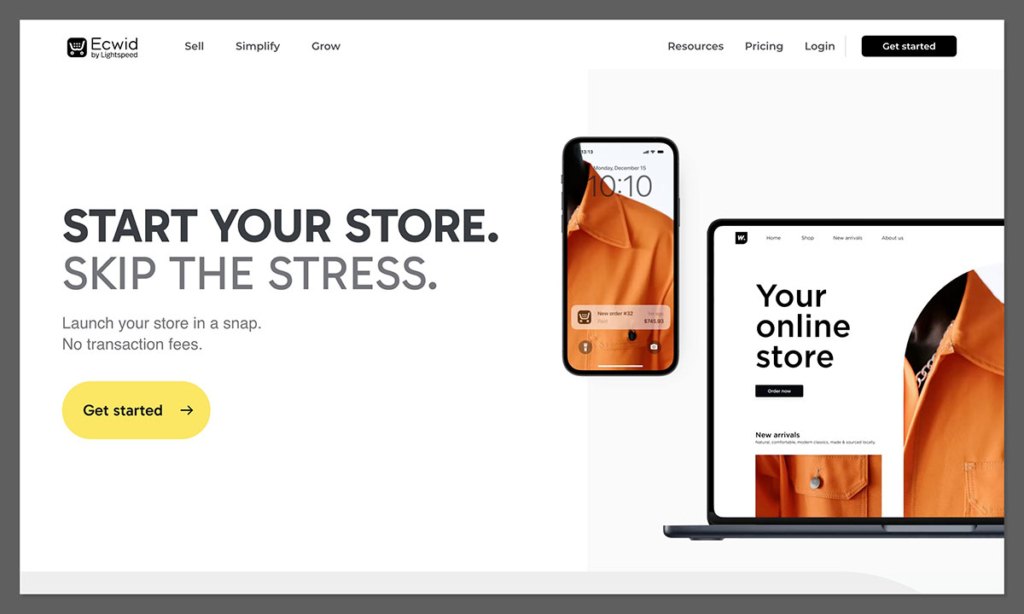
Why I Recommend It
Ecwid is perfect if you already have a website and just want to add eCommerce without rebuilding everything from scratch.
It works as a plug-in solution that can bolt onto WordPress, Joomla, Weebly, or even a custom HTML site. You keep your current site and simply drop in a store wherever you want.
I used Ecwid with a content creator who wanted to start selling merch directly from her WordPress blog. No developers, no plugins overload, no hosting headaches.
It took an hour to set up, and everything from product listings to checkout was live the same day. That kind of simplicity is what makes Ecwid so appealing for smaller-scale or side-project stores.
It’s not trying to be a full-featured platform like Shopify or BigCommerce — and that’s a good thing. If your product offering is light, and your site already exists, Ecwid keeps things lean and efficient.
Pros
- Simple no-code setup — embed your store with just a few clicks
- Integrates with virtually any CMS or site builder
- Native syncing with Facebook, Instagram, TikTok, and Amazon
- Responsive and mobile-optimised storefront
- Great for adding commerce to service or content-based businesses
Cons
- Not designed for stores with large product catalogs
- Limited design flexibility compared to full eCommerce platforms
- Some SEO and URL structure limitations depending on integration
- Scalability is capped once you start adding complex features
Pricing
| Plan | Monthly Cost (USD) | Features Included |
|---|---|---|
| Free | 0 | Up to 5 products, basic store setup |
| Venture | 19 | Up to 100 products, social selling, discount coupons |
| Business | 39 | Inventory tracking, Google Shopping, POS integration |
| Unlimited | 99 | Unlimited products, marketplace sync, custom development |
Even the free plan includes secure checkout and mobile responsiveness, which makes it ideal for testing an idea or building a simple storefront quickly.
Best For
- Bloggers, content creators, or service providers adding a product line
- Businesses that already have a site and want to avoid rebuilding
- Brands testing a product idea before committing to a full store
- Merch shops, downloadable products, or low-maintenance sales channels
- Sellers who want to use one dashboard to manage website, social, and marketplace sales
Ecwid isn’t here to compete with Shopify or WooCommerce — and it doesn’t need to. It’s a lightweight, efficient solution for brands who don’t want the overhead of a full eCommerce rebuild.
If you’ve got an existing audience and just need a quick, clean way to sell something, Ecwid fits in almost anywhere.
It’s a solid option for testing, side-hustles, or bolting onto a service-based business. And since it plays nicely with so many platforms, it lets you dip your toes into eCommerce without needing to commit to a complete migration from Volusion or any other platform. Simple, fast, and functional.
Final Verdict: Which Volusion Alternative Is Right For You?
If you’re still on Volusion, chances are you’re already feeling the pinch — slow backend, limited features, and a user experience that’s lagging behind the competition. Whether you’re stuck in tech debt or just tired of fighting the interface, it’s time to upgrade.
The good news? There’s a solid replacement for every type of business. The key is knowing what you need — not just what’s popular.
Here’s how I break it down based on use case:
Quick Recommendations by Use Case
| Use Case | Best Platform | Why It Works |
|---|---|---|
| All-round, plug-and-play growth | Shopify | Scalable, user-friendly, rich ecosystem |
| Large catalog or scaling fast | BigCommerce | Strong built-in features, no transaction fees |
| Full control and SEO performance | WooCommerce | Open-source, content + commerce, SEO-friendly |
| Lightweight, design-led storefront | Wix | Drag-and-drop builder, beautiful templates |
| Brand-first storytelling with commerce | Squarespace | Stunning templates, strong content tools |
| Budget-conscious startup | Shift4Shop | Free plan, solid features, no monthly cost (with conditions) |
| Full control for enterprise | Magento / Adobe Commerce | Deep customisation, scalable architecture |
| International stores needing localisation | PrestaShop | Multi-language and multi-currency built in |
| Adding eCommerce to existing content site | Ecwid | Plug-and-play store, easy to embed anywhere |
How to Make the Switch with the Least Pain
Switching platforms can feel overwhelming — but it doesn’t have to be if you follow a clear plan. I’ve helped multiple stores migrate from Volusion without losing traffic, revenue, or sleep.
Here’s a basic framework that works:
1. Back up everything from Volusion
- Products, customers, order history, URLs, meta data
- Export product images and any media assets
- Download existing analytics and performance data
2. Choose your platform
- Use the table above to align features with your current and future needs
- Don’t just look at features — consider your team’s tech skills and support needs
3. Use a migration tool or service
- Tools like Cart2Cart or LitExtension can automate most of the heavy lifting
- Hire a freelancer or agency if you’re dealing with custom setups or large inventories
4. Set up 301 redirects
- This is critical for SEO
- Map old URLs to new ones, especially product and category pages
- Preserve your site architecture wherever possible
5. Match your meta data
- Copy over page titles, descriptions, schema markup, and open graph tags
- Use SEO plugins or built-in tools on your new platform to replicate the structure
6. Test before launch
- Double-check the checkout flow, product variants, payment gateways, shipping rates
- Check for broken links, missing images, and metadata errors
7. Monitor performance after launch
- Track changes in traffic, bounce rate, and conversions
- Set up analytics and heatmaps (like Hotjar or Microsoft Clarity) for UX testing
Bonus Tools to Make Migration Easier
If you’re serious about keeping your traffic and making the new site perform better than the old one, you need more than a clean export. You need strategy. Start here:
1. SEO Migration Checklist
Use this SEO migration guide to avoid tanking your rankings:
It covers:
- URL mapping
- Canonical tags
- Redirect testing
- Sitemap resubmission
- Page speed fixes
2. UX Audit Template
Not all platforms treat UX the same. Use this to tighten up your store’s layout:
- Conduct a UX teardown using tools like Hotjar, Microsoft Clarity, or Google Optimize
- Evaluate key pages: homepage, category, product, cart, checkout
- Ask: Is it easy to find, easy to buy, and easy to trust?
Bottom Line
Volusion had its moment. But if you’re trying to grow a modern eCommerce business — whether you’re doing 5 figures or 8 — there are far better options today. The tools in this list aren’t just replacements. They’re upgrades.
Pick the one that matches your business model, your goals, and your team. Do the migration right, protect your SEO, and treat this switch like an opportunity — not just a rescue mission.






